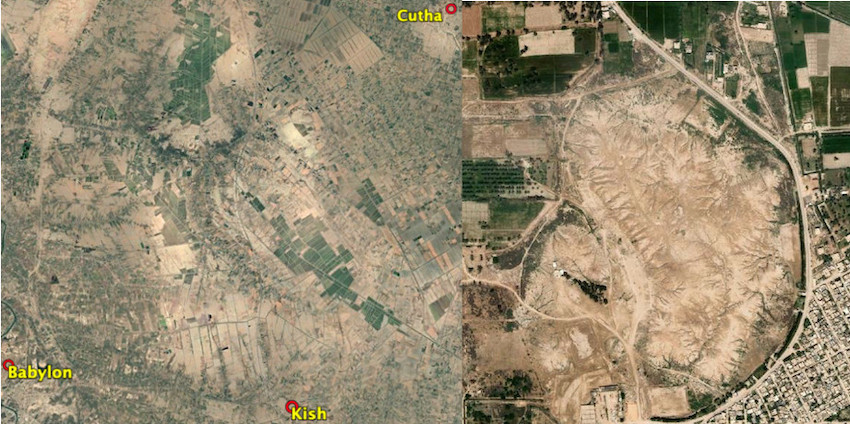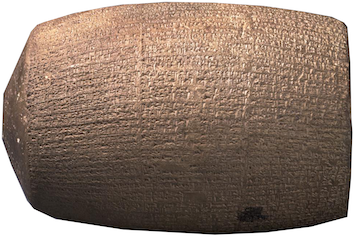Ešurugal (temple of Ereškigal at Cutha)

Ešurugal is a (minor) temple at Cutha that is dedicated to the goddess Ereškigal, the consort of the god Nergal, the so-called "Marduk of the netherworld." The Neo-Babylonian king Nebuchadnezzar II (r. 604–562 BC) claims that he had that temple built anew.
Names and Spellings
The Sumerian ceremonial name of this temple at Cutha means "House, Great City." Urugal (or Irigal) is a byname of the netherworld, a cosmic domain over which Ereškigal (and her consort Nergal) presides.

CBS 00009, a three-column clay cylinder with an Akkadian inscription of the Neo-Babylonian king Nebuchadnezzar II mentioning his rebuilding of Ešurugal. Photo credit: Penn Museum.
- Written Forms: EŠ₃.URUGAL.GAL.
Known Builders
- Neo-Babylonian (ca. 625–539 BC)
- Nebuchadnezzar II (r. 604–562 BC)
Building History
An Akkadian inscription of the Neo-Bablyonian king Nebuchadnezzar II written on a clay cylinder (presumably from Kish) states that he had Ešurugal built anew. The relevant passage of that text reads:
No further information about the project are known from presently-extant inscriptions.
Archaeological Remains
Ešurugal has not yet been identified in the archaeological record. It is unclear if the temple was an independent, freestanding structure or a (complex of) rooms in Emeslam.
Further Reading
- George, A.R. 1993. House Most High: The Temples of Ancient Mesopotamia (Mesopotamian Civilizations 5), Winona Lake, p. 85 no. 288.
Jamie Novotny & Naomi Weir
Jamie Novotny & Naomi Weir, 'Ešurugal (temple of Ereškigal at Cutha)', Babylonian Temples and Monumental Architecture online (BTMAo), The BTMAo Project, a sub-project of MOCCI, [http://oracc.org/btmao/Cutha/TemplesandZiggurat/Eshurugal/]